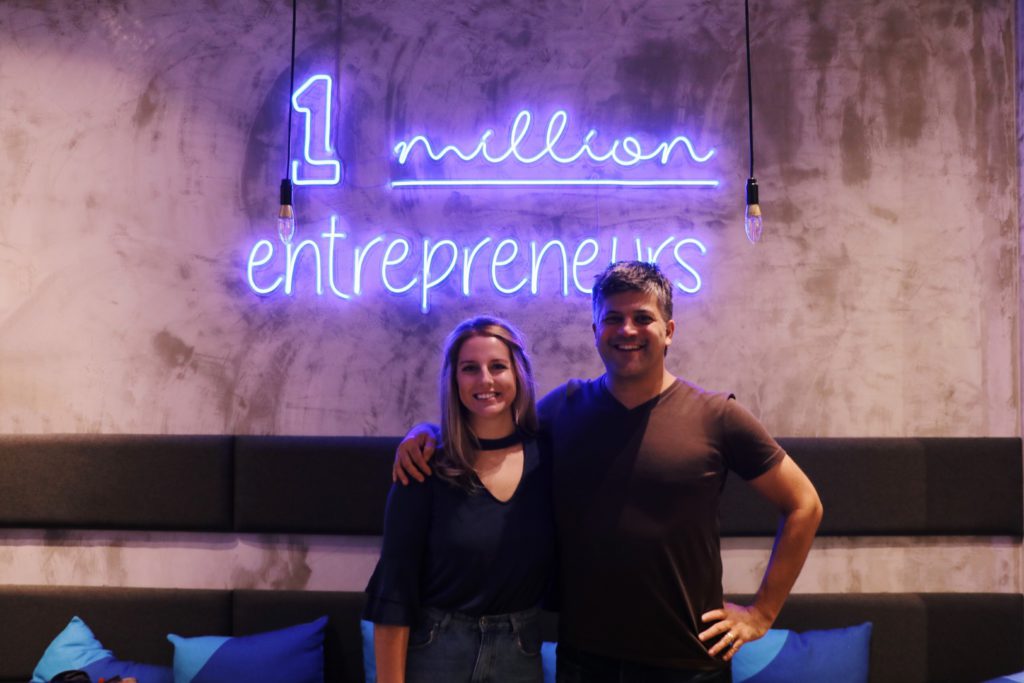Draper Startup House Ventures (DSH Ventures) is a platform that allows entrepreneurs access to a global network of funding options. Drawing on the pool of funds in the Draper Venture Network and wider connections, DSH Ventures allows people to connect and pitch to potential investors internationally without needing to travel and meet in-person, which has long been the traditional method.
Launched in March 2020, the team has worked through COVID-19 lockdowns to grow the platform and provide funding opportunities that may not have been possible previously.
Head of Ventures, Giulianna Crivello spoke to KrASIA about launching the platform and shared her insights on the Southeast Asian startup ecosystem over the last few months.
The following interview has been edited for brevity and clarity.
KrASIA (Kr): DSH Ventures started in March just before COVID-19 restrictions came in. What was it like to launch a company during such a chaotic period?
Giulianna Crivello (GC): We were supposed to launch in June of this year, and before COVID-19, in March, I was actually abroad. When the lockdowns came in, I had about five hours to decide whether I was going to the US or back to Singapore. I remember getting a phone call from Vikram [Founder of DSH] saying “Hey with this COVID-19 situation, I know we were planning on launching in June, but we need to launch ASAP”.
After we got back to Singapore, we drew on my business partner, Nick, who brought on our associate, also called Nick, to see what we could do with a very small amount of time. We found a white-label platform that was a very low touch but good minimal viable product to use to launch quickly.
In terms of the partnership aspect, it greatly accelerated things. Typically a lot of the venture capital (VC) firms and angel investors would have taken more than three meetings to bring on as partners. Skipping this with lockdown meant it helped us scale the partnerships faster.
I think it helped accelerate the marketplace aspect for both the startups and the investors. The positive side of that is it allowed us to branch out into different regions where we don’t have physical locations.
Kr: What were your observations of the ecosystem when COVID travel restrictions started to come into place which took away normal face-to-face interactions?
GC: In the beginning, a lot of the firms were saying, “We don’t know what this COVID situation will look like but it should be gone by May”.
Once it hit July and August, that’s when we heard “We’re more than happy to appear on panels but we’re not looking at any new deals.”
That was the dichotomy that was misleading against the general public messaging of positivity from investors. There were a lot of panels with a lot of misleading information in the sense of trying to be optimistic, even though there was a lot of retraction in investments.
Once October hit this started easing. There was optimism in the startup community and investors started looking at more deals. I think that’s when the trend set in where a lot of firms started shifting their focus to see what was going to be feasible moving forward. Now I feel it has rebounded, especially as a lot of these firms have to invest in a certain number of companies in a year.
I think a lot of people have re-shifted the focus with the expectations of COVID-19 not going away anytime soon. The focus now is to prioritize and plan for the shift, try to ride certain waves such as edtech and healthtech.

Kr: Your team is in a unique position because you’re a link between investors and startups. How do you find bridging these relationships?
GC: It’s something that is kind of hard to do but it’s very helpful in the sense that we have both ears to the ground on both sides. We have very real data about what investors are currently investing in and also what startups are pivoting to, how they’re fixing their problems, and how they’re managing.
In terms of management, it’s interesting. It does involve some hard work because a lot of these relationships, especially on the investment side, does take a lot of rigorous relationship management. For the most part, it hasn’t been a problem though. Since we’re a lean team split between startups and investors, while we have communication channels for both to try to make everyone happy.
Kr: Do you see the growth in Southeast Asia continuing as it was pre-COVID?
GC: There’s still a lot of innovation to be done here in the sense that a lot of problems still need fixing which creates momentum in the area. This stalled in the last year, but with news about vaccines, I feel personally from the conversations I’ve had there is no panic now. There is a commitment to stay and work to put money in the right areas of the ecosystem.
Kr: What advice would you give to founders to help develop and maintain a relationship with investors?
GC: The biggest thing about founders when they’re trying to fundraise, they try to reach out to as many folks as possible to diversify their chances of getting funded. In this region, I think the cultivation of personal relationships goes a long way. A lot of times, the time is better spent getting to know a select few firms, and having referrals based on that, whereas with the cold outreach a lot of people go about the conversations in ways that aren’t helpful.
Founders also get incredibly defensive and very protective of their ideas. The more information I have, the more I can direct you to people who can help you move towards your goals. It just needs a pivot of how you approach the relationship aspect again. Another thing for founders who are maybe deterred right now in this ecosystem, it’s an incredible time right now to build something.

